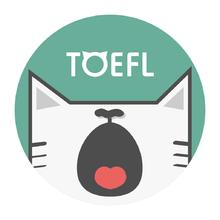 返回
教育头条
返回
教育头条

托福阅读考试练习题人类起源
为了帮助大家高效备考托福,今天小编为大家带来托福阅读练习:人类起源,希望对大家有所帮助。一起跟随小编来练习下吧!
There are two main hypotheses when it comes to explaining the emergence of modern humans. The ‘Out of Africa’ theory holds that homo sapiens burst onto the scene as a new species around 150,000 to 200,000 years ago in Africa and subsequently replaced archaic humans such as the Neandertals. The other model, known as multi-regional evolution or regional continuity, posits far more ancient and diverse roots for our kind. Proponents of this view believe that homo sapiens arose in Africa some 2 million years ago and evolved as a single species spread across the Old World, with populations in different regions linked through genetic and cultural exchange.
Of these two models, Out of Africa, which was originally developed based on fossil evidence, and supported by much genetic research, has been favored by the majority of evolution scholars. The vast majority of these genetic studies have focused on DNA from living populations, and although some small progress has been made in recovering DNA from Neandertal that appears to support multi-regionalism, the chance of recovering nuclear DNA from early human fossils is quite slim at present. Fossils thus remain very much a part of the human origins debate.
Another means of gathering theoretical evidence is through bones. Examinations of early modern human skulls from Central Europe and Australia dated to between 20,000 and 30,000 years old have suggested that both groups apparently exhibit traits seen in their Middle Eastern and African predecessors. But the early modern specimens from Central Europe also display Neandertal traits, and the early modern Australians showed affinities to archaic Homo from Indonesia. Meanwhile, the debate among paleoanthropologists continues , as supporters of the two hypotheses challenge the evidence and conclusions of each other.
1 The passage primarily discusses which of the following
(a) Evidence that supports the “Out of Africa” theory (b) Two hypotheses and some evidence on the human origins debate (c) The difficulties in obtaining agreement among theorists on the human origins debate (d) That fossils remain very much a part of the human origins debate
2 The word “emergence” in line 1 is closest in meaning to
(a) complexity (b) development (c) appearance (d) decline
3 The word “proponents” in line 6 is closet in meaning to
(a) experts (b) advocates (c) inspectors (d) historians
4 All of the following are true except
(a) three methods of gathering evidence are mentioned in the passage (b) the multi-regional model goes back further in history. (c) the Out of Africa model has had more support from scholars (d) DNA studies offer one of the best ways in future to provide clear evidence.
5 The word “slim” in line 14 is closest in meaning to
(a) small (b) narrow (c) thin (d) difficult

6 Which of the following is not true
(a) the vast majority of genetic studies have focused on living populations (b) early modern human skulls all support the same conclusions (c) both hypotheses focus on Africa as a location for the new species. (d) early modern Australian skulls have similarities to those from Indonesia.
7 In line 18, the word “their ” refers to which of the following
(a) Middle Easterners and Africans (b) skulls (c) central Europeans and Australians (d) traits
8 Which of the following is NOT true about the two hypotheses
(a) Both hypotheses regard Neandertals to be the predecessors of modern humans (b) Genetic studies have supported both hypotheses (c) Both hypotheses cite Africa as an originating location. (d) One hypothesis dates the emergence of homo sapiens much earlier than the other.
9 It can be inferred from the passage that
(a) there is likely to be an end to the debate in the near future (b) the debate will interest historians to take part in (c) the debate is likely to be less important in future (d) there is little likelihood that the debate will die down
10 According to the passage, the multi-regional evolution model posits far more diverse roots for our kind because
(a) Evidence from examinations of early modern human skulls has come from a number of different parts of the world. (b) DNA from Neandertal appears to support multi-regionalism (c) Populations in different regions were linked through genetic and cultural exchange (d) This has been supported by fossil evidence
参考答案:1.b 2.c 3.b 4.d 5.a 6.b 7.c 8.a 9.d 10.c
There are two main hypotheses when it comes to explaining the emergence of modern humans. The ‘Out of Africa’ theory holds that homo sapiens burst onto the scene as a new species around 150,000 to 200,000 years ago in Africa and subsequently replaced archaic humans such as the Neandertals. The other model, known as multi-regional evolution or regional continuity, posits far more ancient and diverse roots for our kind. Proponents of this view believe that homo sapiens arose in Africa some 2 million years ago and evolved as a single species spread across the Old World, with populations in different regions linked through genetic and cultural exchange.
Of these two models, Out of Africa, which was originally developed based on fossil evidence, and supported by much genetic research, has been favored by the majority of evolution scholars. The vast majority of these genetic studies have focused on DNA from living populations, and although some small progress has been made in recovering DNA from Neandertal that appears to support multi-regionalism, the chance of recovering nuclear DNA from early human fossils is quite slim at present. Fossils thus remain very much a part of the human origins debate.
Another means of gathering theoretical evidence is through bones. Examinations of early modern human skulls from Central Europe and Australia dated to between 20,000 and 30,000 years old have suggested that both groups apparently exhibit traits seen in their Middle Eastern and African predecessors. But the early modern specimens from Central Europe also display Neandertal traits, and the early modern Australians showed affinities to archaic Homo from Indonesia. Meanwhile, the debate among paleoanthropologists continues , as supporters of the two hypotheses challenge the evidence and conclusions of each other.
1 The passage primarily discusses which of the following
(a) Evidence that supports the “Out of Africa” theory (b) Two hypotheses and some evidence on the human origins debate (c) The difficulties in obtaining agreement among theorists on the human origins debate (d) That fossils remain very much a part of the human origins debate
2 The word “emergence” in line 1 is closest in meaning to
(a) complexity (b) development (c) appearance (d) decline
3 The word “proponents” in line 6 is closet in meaning to
(a) experts (b) advocates (c) inspectors (d) historians
4 All of the following are true except
(a) three methods of gathering evidence are mentioned in the passage (b) the multi-regional model goes back further in history. (c) the Out of Africa model has had more support from scholars (d) DNA studies offer one of the best ways in future to provide clear evidence.
5 The word “slim” in line 14 is closest in meaning to
(a) small (b) narrow (c) thin (d) difficult

6 Which of the following is not true
(a) the vast majority of genetic studies have focused on living populations (b) early modern human skulls all support the same conclusions (c) both hypotheses focus on Africa as a location for the new species. (d) early modern Australian skulls have similarities to those from Indonesia.
7 In line 18, the word “their ” refers to which of the following
(a) Middle Easterners and Africans (b) skulls (c) central Europeans and Australians (d) traits
8 Which of the following is NOT true about the two hypotheses
(a) Both hypotheses regard Neandertals to be the predecessors of modern humans (b) Genetic studies have supported both hypotheses (c) Both hypotheses cite Africa as an originating location. (d) One hypothesis dates the emergence of homo sapiens much earlier than the other.
9 It can be inferred from the passage that
(a) there is likely to be an end to the debate in the near future (b) the debate will interest historians to take part in (c) the debate is likely to be less important in future (d) there is little likelihood that the debate will die down
10 According to the passage, the multi-regional evolution model posits far more diverse roots for our kind because
(a) Evidence from examinations of early modern human skulls has come from a number of different parts of the world. (b) DNA from Neandertal appears to support multi-regionalism (c) Populations in different regions were linked through genetic and cultural exchange (d) This has been supported by fossil evidence
参考答案:1.b 2.c 3.b 4.d 5.a 6.b 7.c 8.a 9.d 10.c
托福阅读考试练习题人类起源,如果你喜欢这篇文章,请将其保留版权转载。我的微信号(18560125702)欢迎来咨询,10年教培行业工作经验,如果你在托福方面有疑问,请与我联系,我将为您提供全面专业的选课帮助。返回教育宝头条
【免责声明】本文仅代表作者本人观点,与教育宝无关。教育宝对文中陈述、观点判断保持中立,不对所包含内容的准确性、可靠性或完整性提供任何保证。请读者仅作参考,特此声明!





